Faye Toogood: Multidisciplinary Designer
By Something CuratedBritish designer Faye Toogood works across interiors, retail design, furniture, architecture and, most recently, fashion. Her unique objects demonstrate a preoccupation with materiality and experimentation. All of her pieces are handmade by small-scale fabricators and traditional artisans. Known to question and reinterpret the application of design, her approach disregards the tendency to have a consistent style running through projects. Boldly moving between mediums and disciplines, Toogood’s practice champions versatility.
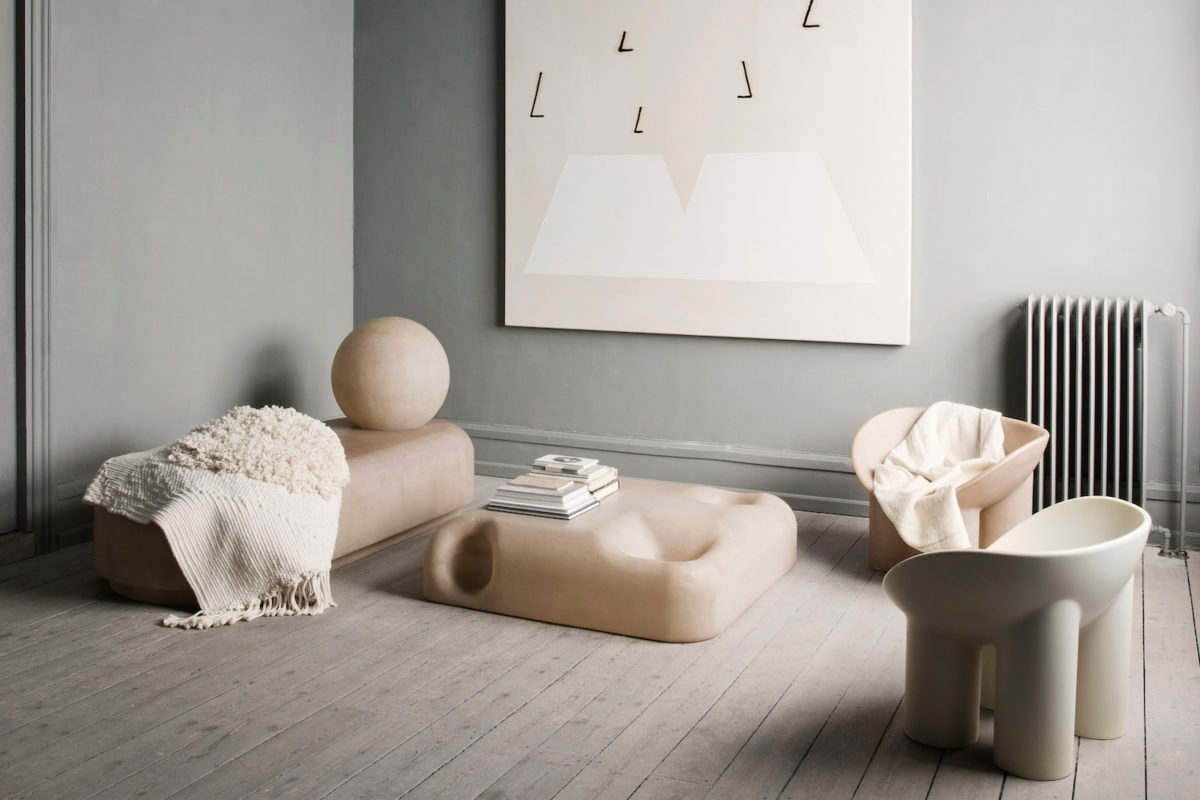
Beginning her career as an editorial interiors stylist and later as interiors editor at Conde Nast’s The World Of Interiors, Toogood worked in print media for over a decade. She notes: “I realised that building a set and watching people play and look at a space was more interesting to me.” The studio has grown to encompass various talents and disciplines from diverse backgrounds all working as one entity under the creative direction of Toogood. Her practice consults, conceptualises and executes multi-sensory environments and interiors for clients wanting to create immersive spaces and experiences for their audience.
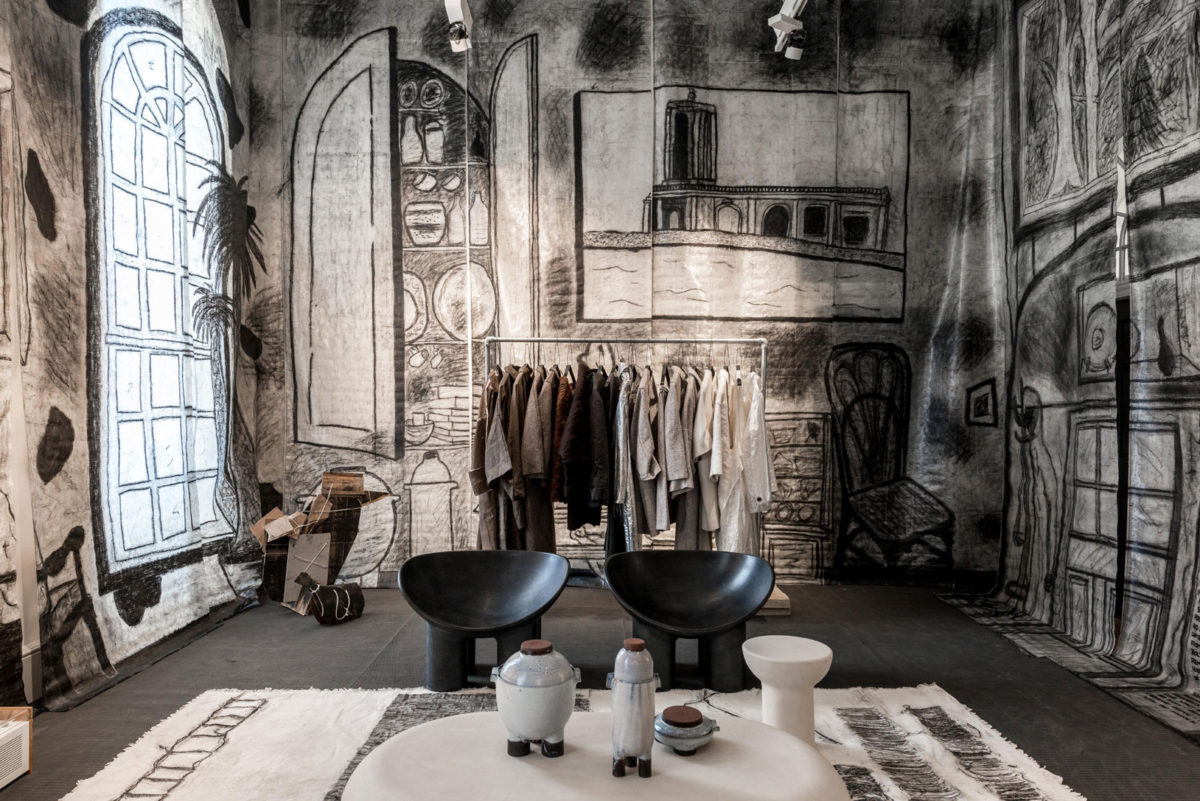
Her highly sculptural work, while showing an astute respect for the past, is derived from pure self-expression and instinct. Toogood’s objects are grouped together into her trademark numbered Assemblages. This allows her to avoid the formulaic, to experiment with the materials and processes that dominate her thinking at a particular time. With each Assemblage, she engages not only with the products themselves but also with the three-dimensional space in which they are exhibited, working across multiple disciplines to create a single body of work with an intuitive and unified narrative.
Toogood’s illustrious career spans countless innovative projects, including commissions for international art and design institutions, schemes for London Design Week, and numerous collaborations with leading retailers and fashion brands. Something Curated takes a closer look at some of the studio’s seminal projects over the past decade.
Comme des Garçons Installation at Dover Street Market
In 2009, Toogood’s practice was commissioned by DSM London to construct an installation to display shoes, specifically sneakers, for Comme des Garçons. Simple and clean in its execution, the installation was comprised of a formation of stacked white plaster cubes, industrial copper pipe configurations, and rough concrete walls. Light bulbs were suspended from coarse, textured rope by Christien Meindertsma. The positioning of the cubes, subtly repurposed and altered the way in which people interacted with the space.
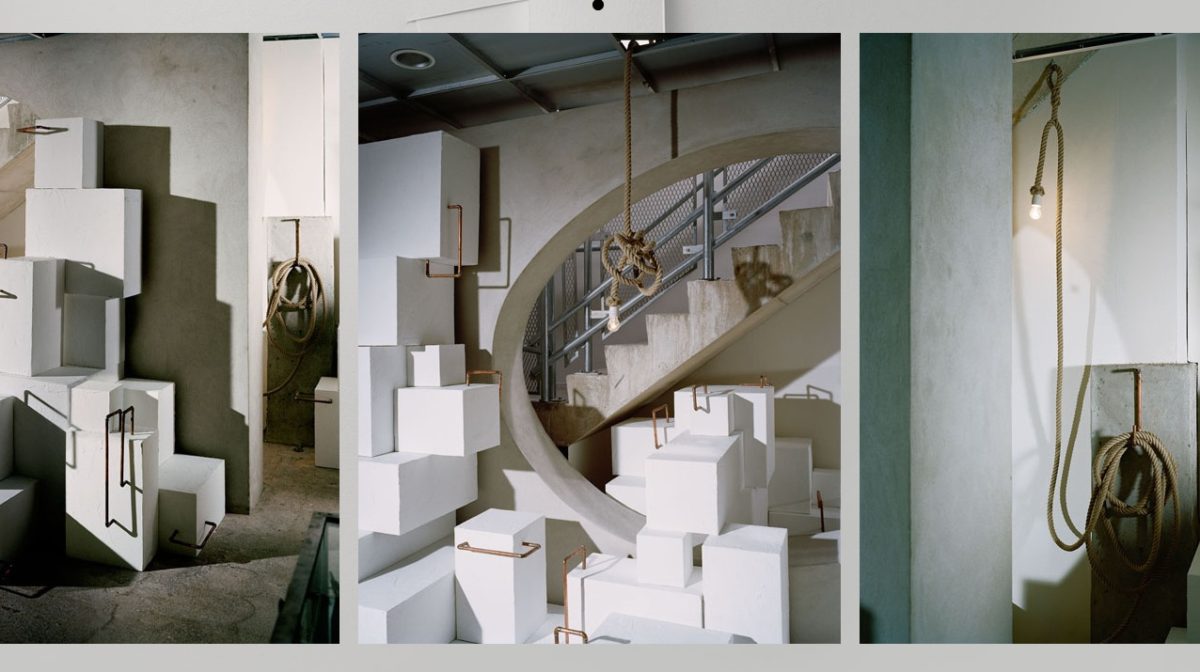
“I wanted to create a space that was both raw and elegant, so I chose to work with plaster, copper, concrete and rope. The idea was not to have a super glossy, highly finished look but to reveal the very nature of the materials and their inherent imperfections – or in my view – inherent beauty” – Dezeen, 2009
Assemblage 1
The Studio’s first furniture and lighting collection, Assemblage 1, was presented in a west London garage as part of their Super Natural exhibition during London Design Festival 2010. The exhibition curated by Faye celebrated the act of foraging and featured an installation of wild mushrooms, hand picked and gathered by a mushroom expert in the New Forest. The series focussed on three recurring elements: stone, brass and English Sycamore, with a particular emphasis on British craft and locally sourced raw materials.
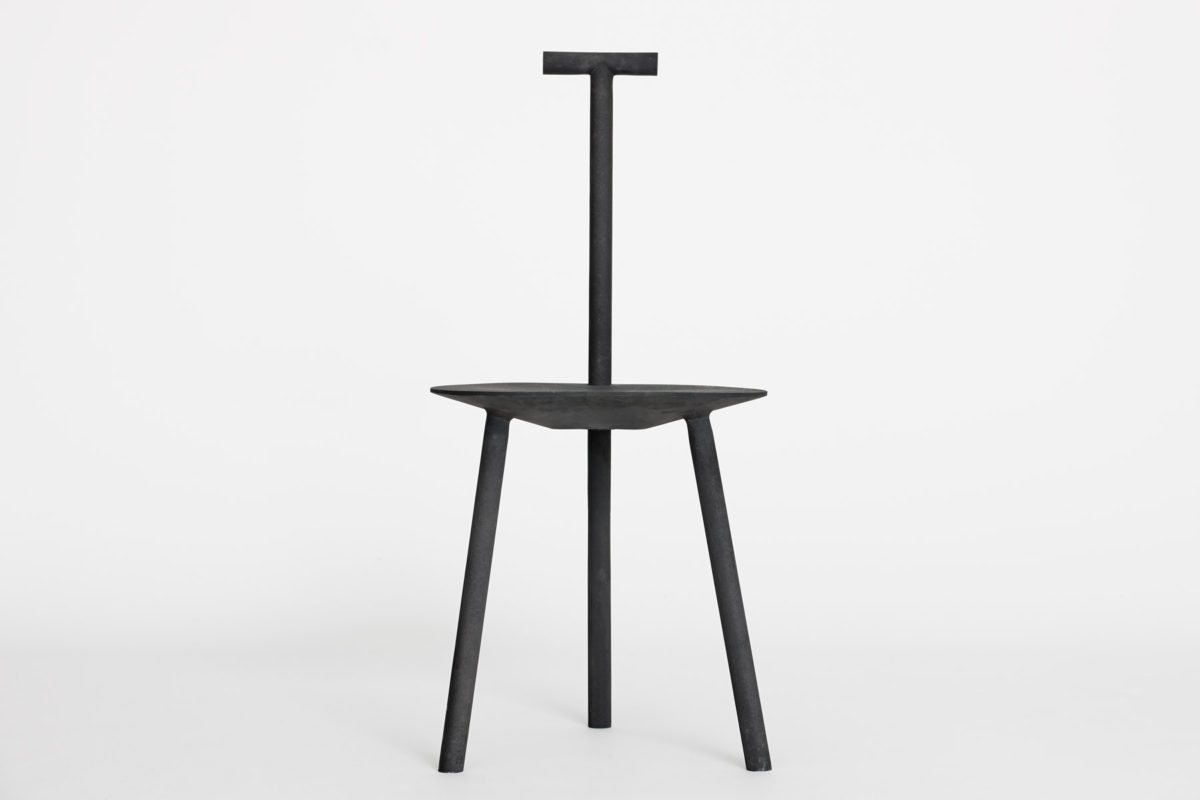
The project consisted of two ranges, titled The Spade and The Elemental. The Spade collection was made largely with sycamore, employing traditional joinery techniques. Featuring a side table, chair, stool and dining table, took inspiration from the elegant and minimal composition of the unassuming spade, an object of function in rural life. The Elemental Range emphasised the dialogue between material and craftsmanship, consisting of lighting pieces and a table. The two pieces clearly reference the simple geometric form, combined with the integrity of raw materials, resulting in a series which is honest, modern and equally relevant.
The Cloakroom Project
Having previously collaborated with her sister, garment pattern cutter Erica, the Toogood siblings came together once again to create a site specific immersive experience and installation within the Victoria & Albert Museum, during the 2015 London Design Festival.“This whole installation is about uniting my sculptural furniture background with Erica’s pattern cutting and fashion background,” Faye notes. The duo created an edition of 150 one-off coats, crafted from a compressed foam fabric produced by Danish textile brand Kvadrat.
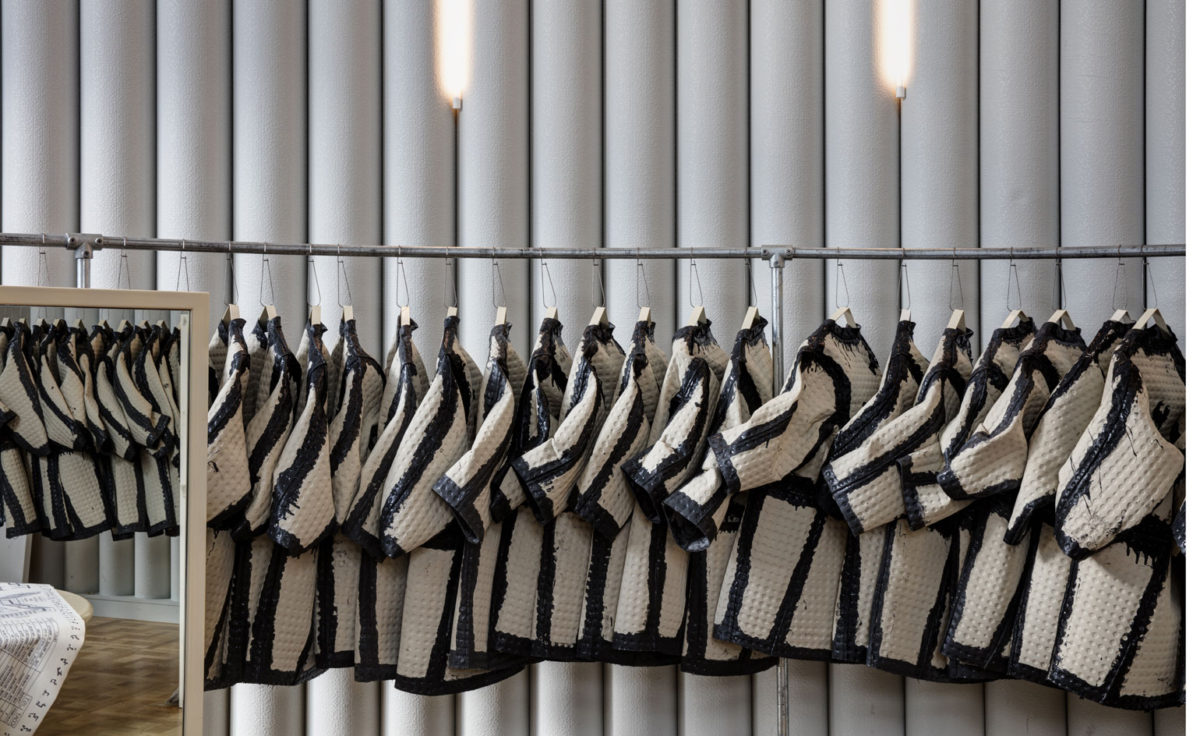
The seams and junctions were hand coated in a black silicone, highlighting the structure and cut with each piece set apart by its imperfections. The coats, lined with a detachable large-scale label served as a map of the interior of the museum. These were to be borrowed and worn by visitors whilst navigating through the rooms of the institution. Ten coat sculptures crafted in the same material as their surrounding were situated along the mapped out route.
Selfridges’ Gender Neutral Retail Space
Studio Toogood created gender neutral conceptual retail spaces for one of the UK’s largest department stores. In keeping with the narrative, for the first time in the history of the store, which was founded in 1909, not a single mannequin was displayed in the 27 windows. The Agender initiative was mapped out across two floors of the Oxford Street premises.
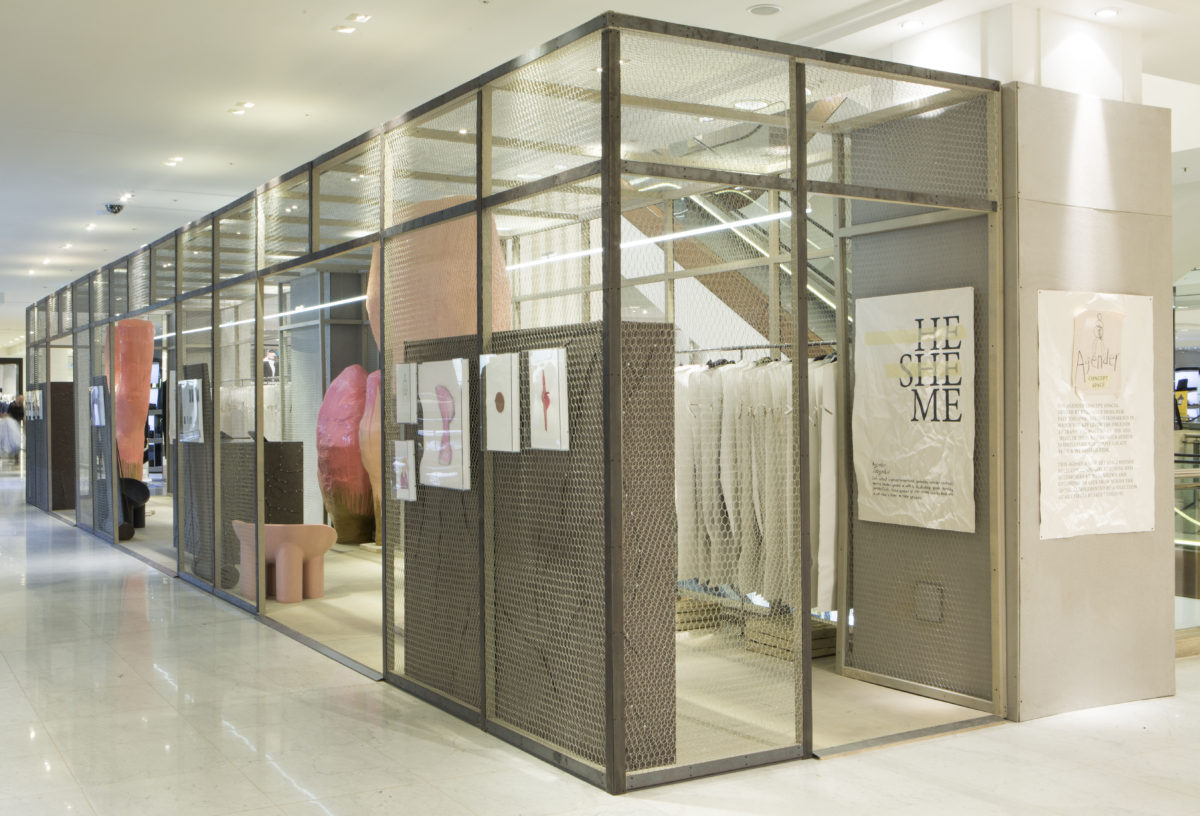
The first floor comprised of abstract sculptures, using latex and vulcanised rubber in a fleshy palette, and the second floor applied darker tones, utilising materials including concrete, horsehair and steel. Merchandise from over forty luxury brands were hung in white uniform garment bags and brown boxes, instantly effective in removing all indications towards a specific gender.
On Studio Toogood’s approach:
“Our approach is not only artistic and intellectual, we seek to provoke and challenge what design is … the key is freedom from any particular style or period or notion of what design is, the process starts abstractly. I find two or three elements that are abstract, disparate. That’s the way to find something new.” – LS:N Global, 2010
On her impetus:
“I wanted to create environments that people would actually use and come into. It became a bit of a greedy way of working. Creating a space is like giving a present to someone, it’s essentially a selfish act, because it’s for you. You create the space to watch someone walk in and use it. That is where the gratification lies, and it is still so exciting for me.” – The Business of Fashion, 2013
On the influence of her background in publishing:
“What I really like, even though I haven’t been at the magazine for five years, is that whether something was from 1720 or 1920 it gets treated the same way. That definitely had a strong influence on me: it’s not just about today but also tomorrow. Having that sense of history and a knowledge of interiors allows you to take references and play with them so that people can consciously and subconsciously react.” – Opening Ceremony, 2012
On gender:
“In the 21st century we’re increasingly aware that gender is not a binary, and the way we choose to present ourselves as individuals shouldn’t be constrained by the artificial divisions of society or commerce.” – Dezeen, 2015